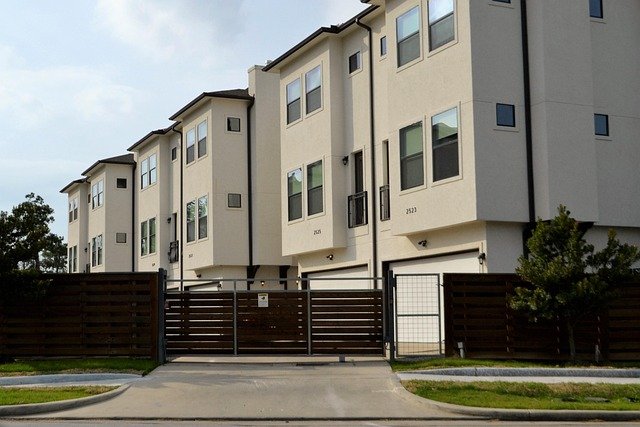Reimagining Urban Density: Micro-Apartments in High-Demand Cities
Introduction: In the ever-evolving landscape of real estate, a new trend is reshaping urban living: micro-apartments. These compact living spaces, typically under 400 square feet, are gaining traction in high-demand cities worldwide. As urban populations swell and housing costs soar, micro-apartments offer a innovative solution to the challenges of modern city life, blending affordability with prime locations.

These diminutive dwellings typically range from 150 to 400 square feet, utilizing clever design techniques to maximize every inch of space. Features often include Murphy beds, convertible furniture, and multi-functional areas that seamlessly transition from living room to bedroom to office space. The emphasis is on efficiency and functionality, with a minimalist aesthetic that appeals to a growing segment of urban dwellers.
Market Drivers and Demographics
The surge in micro-apartment popularity is driven by a confluence of economic, social, and demographic factors. Millennials and young professionals, often burdened with student debt and facing stagnant wages, are drawn to the affordability and prime locations of these compact units. For many, the trade-off of space for a desirable address and lower rent is an attractive proposition.
Additionally, the changing nature of work, with more people working remotely or embracing the gig economy, has shifted priorities. The traditional need for larger living spaces has diminished for some, replaced by a desire for flexibility and access to urban amenities. Micro-apartments cater to this lifestyle, offering a home base in the heart of the city without the financial burden of a larger apartment.
Design Innovations and Challenges
Architects and designers are at the forefront of the micro-apartment revolution, tasked with creating livable, comfortable spaces within extremely tight constraints. This challenge has spurred remarkable innovations in space-saving design and multi-functional furniture. Hydraulic beds that descend from the ceiling, walls that slide to reveal hidden storage, and kitchens that fold away when not in use are just a few examples of the creative solutions being implemented.
However, the micro-apartment trend is not without its critics. Concerns about the potential for overcrowding, the impact on mental health from living in such small spaces, and the fear of creating modern-day tenements have all been raised. Developers and city planners must navigate these concerns carefully, balancing the need for affordable housing with the imperative to maintain quality of life standards.
Regulatory Landscape and Urban Planning
The rise of micro-apartments has prompted cities to reevaluate their zoning laws and building codes. Many municipalities have minimum size requirements for residential units that were established decades ago, well before the current housing crisis. Progressive cities are now updating these regulations to accommodate micro-units, recognizing their potential to alleviate housing shortages and provide affordable options in high-cost areas.
However, the regulatory landscape remains complex and varies significantly from city to city. Some localities have embraced micro-apartments, creating specific zoning categories to facilitate their development. Others have been more cautious, implementing pilot programs to study the impact before making long-term policy decisions. This patchwork of regulations presents both challenges and opportunities for developers looking to enter the micro-apartment market.
Investment Potential and Market Outlook
From an investment perspective, micro-apartments present an intriguing opportunity. The higher per-square-foot rents typically commanded by these units can translate to attractive returns for property owners. Additionally, the smaller unit sizes allow developers to maximize the number of rentable units within a given footprint, potentially increasing overall revenue.
However, investors must carefully consider the long-term viability of the micro-apartment trend. While current demand is strong in many markets, questions remain about the sustainability of this housing model. Will preferences shift as millennials age and start families? How will changing work patterns post-pandemic impact the desire for urban living? These factors will play a crucial role in determining the future success of micro-apartment investments.
The Future of Urban Living
As cities continue to grapple with housing affordability and density issues, micro-apartments are likely to play an increasingly important role in the urban housing mix. The concept is evolving beyond simple studio apartments to include co-living spaces and even entire buildings designed around the micro-living concept, complete with shared amenities and community spaces.
The success of micro-apartments could have far-reaching implications for urban development and city planning. By increasing density in desirable areas without drastically altering the skyline, these compact units offer a potential solution to the competing demands of population growth, affordability, and preservation of neighborhood character.
In conclusion, the micro-apartment trend represents a fascinating intersection of real estate innovation, demographic shifts, and urban planning challenges. As this housing model continues to evolve, it will be crucial for investors, developers, and policymakers to stay attuned to changing consumer preferences and regulatory landscapes. The future of urban living may well be shaped by these small but mighty dwellings, offering a new perspective on what it means to call a city home.





